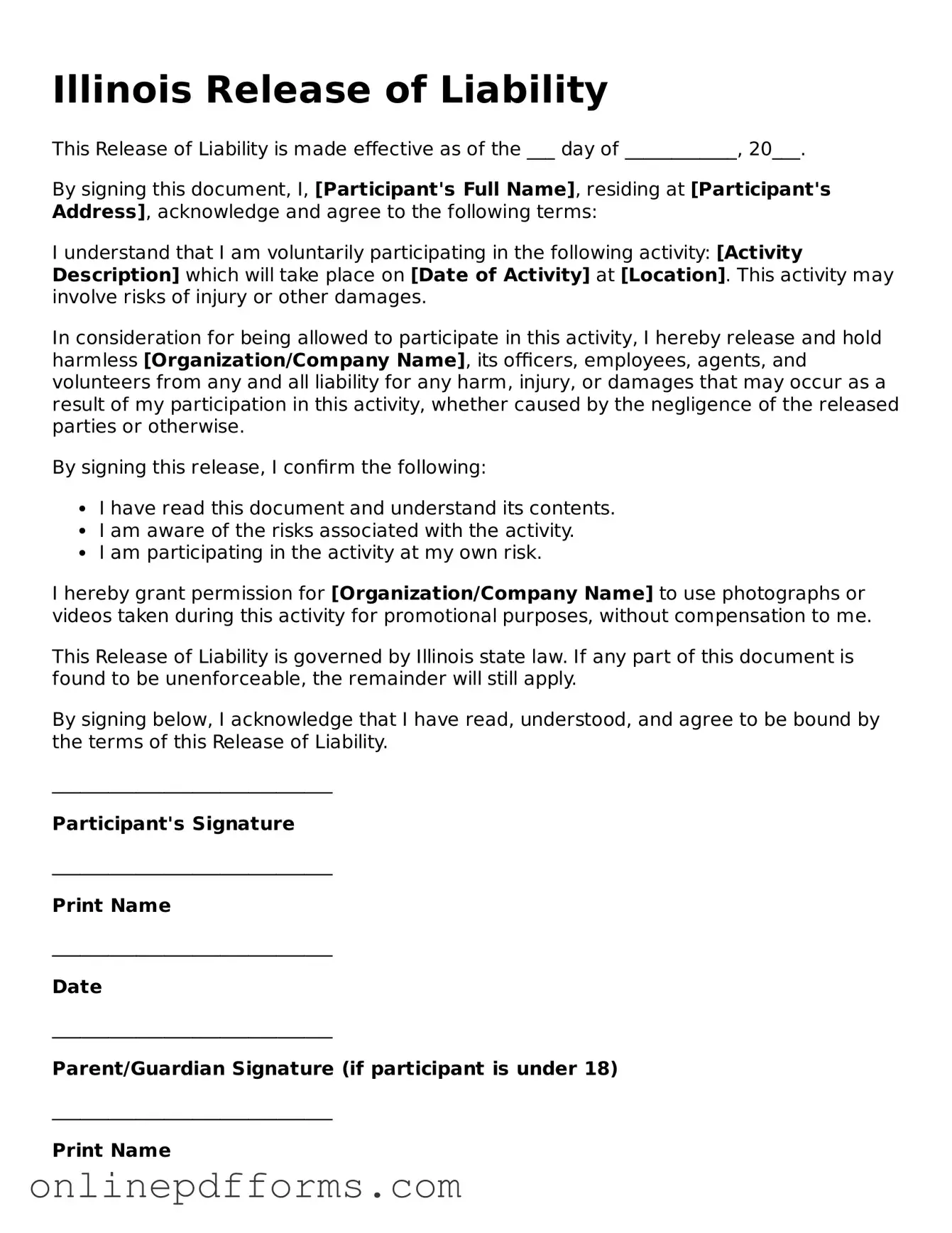The Illinois Release of Liability form shares similarities with the Waiver of Liability. Both documents serve to protect an organization or individual from legal claims arising from injuries or damages that may occur during an activity. In a Waiver of Liability, participants voluntarily relinquish their right to sue, acknowledging the risks involved. This document is commonly used in recreational activities, sports events, and adventure programs, ensuring that participants understand and accept the inherent dangers associated with those activities.
Another document akin to the Illinois Release of Liability is the Indemnity Agreement. This agreement goes a step further by not only releasing one party from liability but also requiring another party to compensate for any losses or damages incurred. It is often utilized in business contracts, where one party agrees to cover the costs of legal claims or damages that may arise from the actions of another party. The emphasis here is on protecting one party from financial repercussions due to the actions of the other.
The Consent Form also parallels the Illinois Release of Liability, particularly in contexts where individuals are asked to participate in activities that may pose risks. A Consent Form typically outlines the specific risks involved and requires participants to acknowledge their understanding and acceptance of those risks. While it may not fully release liability, it serves as a crucial step in ensuring that participants are informed and aware before engaging in potentially hazardous activities.
Next, the Medical Release Form bears resemblance to the Illinois Release of Liability, especially in scenarios where medical treatment might be necessary. This document allows individuals to authorize medical personnel to provide care in emergencies. While its primary focus is on health and safety, it often includes language that limits liability for medical providers. Thus, it helps protect healthcare professionals from legal claims related to treatment provided during an emergency.
The Participant Agreement is another document that functions similarly to the Illinois Release of Liability. This agreement outlines the terms and conditions of participation in an event or activity, including the risks involved. Participants often must sign this document to acknowledge their understanding of the rules and potential dangers. By doing so, they accept responsibility for their actions and agree not to hold the organizers liable for any injuries that may occur.
The Hold Harmless Agreement also shares key features with the Illinois Release of Liability. This document is designed to protect one party from legal claims or damages caused by another party's actions. In essence, the signing party agrees not to pursue legal action against the other party, even if negligence is involved. This agreement is commonly used in various contexts, including rental agreements and service contracts, where one party wishes to limit their liability for potential claims.
For individuals dealing with motor vehicle transactions, it is important to have the appropriate documentation in place, such as a Motor Vehicle Power of Attorney. This legal form allows one person to act on behalf of another, ensuring that vehicle-related affairs are managed smoothly, even when the original owner cannot attend to them personally. To obtain the necessary form, you can visit https://pdftemplates.info/texas-motor-vehicle-power-of-attorney-form.
Lastly, the Release and Waiver of Claims document is closely related to the Illinois Release of Liability. This document combines elements of both a release and a waiver, allowing participants to relinquish their rights to sue for injuries or damages while also acknowledging the risks involved. It is often used in organized events, such as marathons or community activities, ensuring that participants are fully aware of the potential hazards and agree not to hold the organizers responsible for any resulting injuries.
